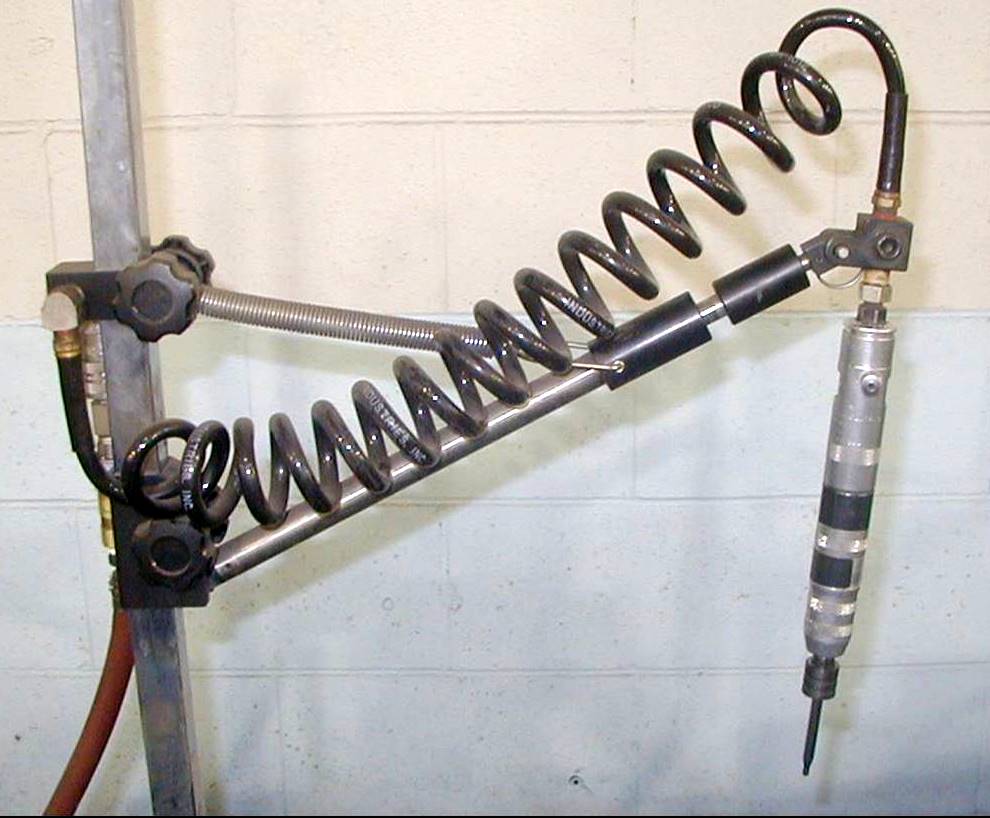 |
| Multi-purpose arm: Suspension, torque control, and point-of-use storage |
Principles affected
- Posture
- Force
- Fatigue
- Environment
(shock, vibration)
Related pages
Workstations
Tools
Background
Counterbalances and other types of supports are often used for tools since they provide multiple benefits:
- Eliminate the need to lift heavy tools
- Reduce static loads on the shoulder from constantly holding tools (even lightweight ones)
- Often include control of torque reaction
- Provide point-of-use storage that keeps the tool within easy reach, yet out of the way
Terminology: A multitude of terms are used for theses devices: “zero-gravity arms,” “articulated arms,” “tool balancer,” “tool retractor,” “spring balancer,” and more.
Objectives
Hold the tool mechanically to eliminate the need for the human to do so. Isolate shock and vibration. Keep the tool in easy reach.
Ideas and Options
Suspension reels
 |
 |
| Spring reel retractors on sliding track | Large retractor on swing arm |
These systems consist of an overhead reel and cable to hold the tool. The reels can be mounted on any convenient overhead support such as tracks or arms. Reels have varying capacities for both light and heavy tools. Tension can be adjusted for the specific tool and use.
The spring mechanisms of the reels can be of several types. Simple springs are low cost but require more exertion the further the cable is pulled from the reel. Typically, these systems retract the tool when released (although some types have rachet locks that allow the tool to retract to a set height). These systems have the advantage of taking the tool farther out of the way when not in use, but then require a longer reach to get hold of again. Thus, they are helpful for tools that are not in constant use.
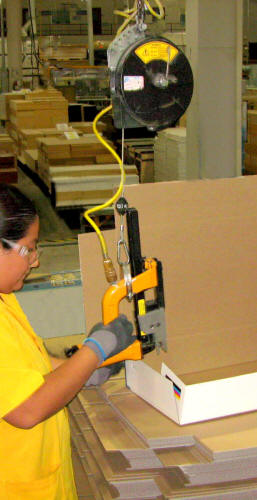 |
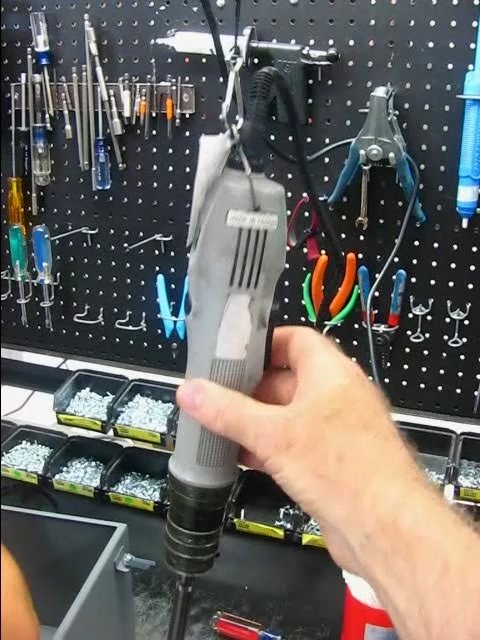 |
| Constant tension reel | Weightless (Click to see video clip) |
More complex reels provide constant tension to make handling easier. Newer styles leave the tool at whatever height it is released, making the tool seem completely weightless (see video clip).
Note that reel and cable systems by themselves cannot be used to control torque reaction.
Arms
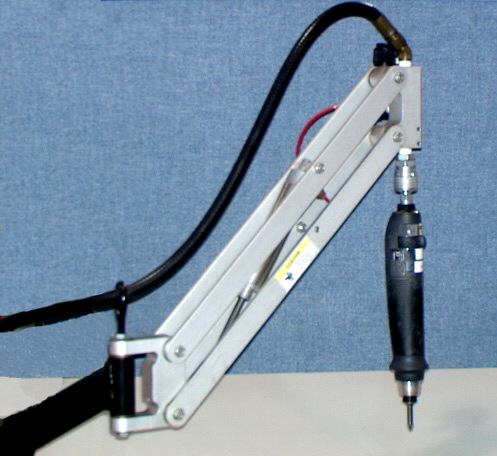 |
| Counterbalance arm |
Tools can also be counterbalanced with arm systems, using either coil springs or pneumatic cylinder springs. Arms can be fitted with several points of articulation that provide excellent flexibility, permitting the tool to be moved to almost any position. Moreover, these styles of arms typically provide torque control so that the tool itself cannot twist, which thus prevents strain on the user’s wrist.
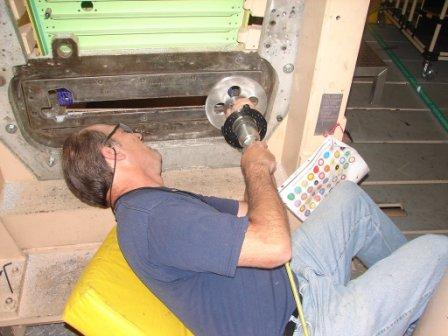 |
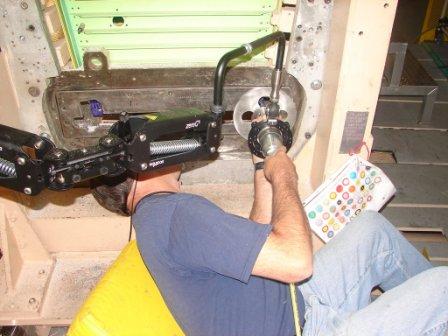 |
| Before: 20 lb. router, no support | After: Heavy duty arm with multiple points of articulation |
Heavy duty arms are available. The version shown above is highly articulated and is adjustable to fit variations in weight.
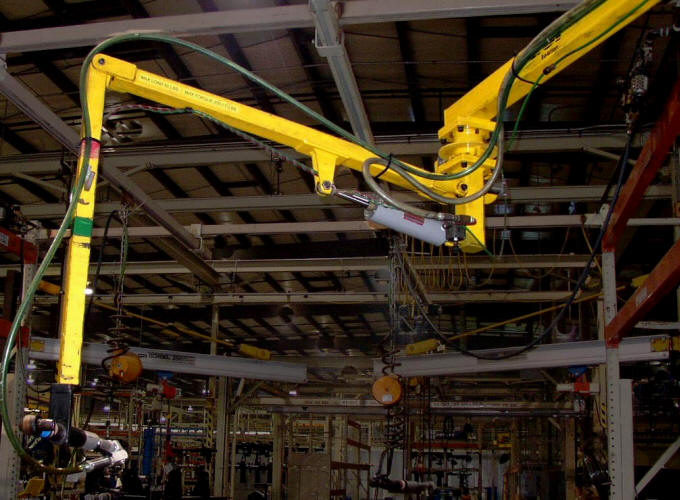 |
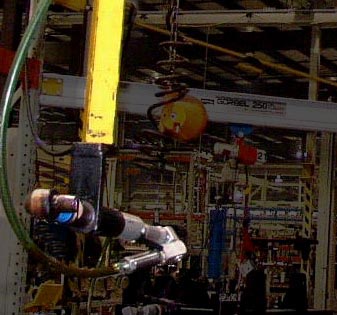 |
| Large arm | Closeup of tool |
Extremely large arms can be used to maneuver heavy tools around sizable items.
 |
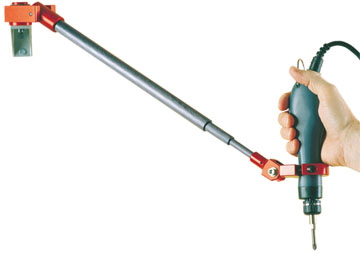 |
| Low profile | Telescoping arm (www.mountztorque.com) |
Small, low-profile arms can be used for lightweight tools.
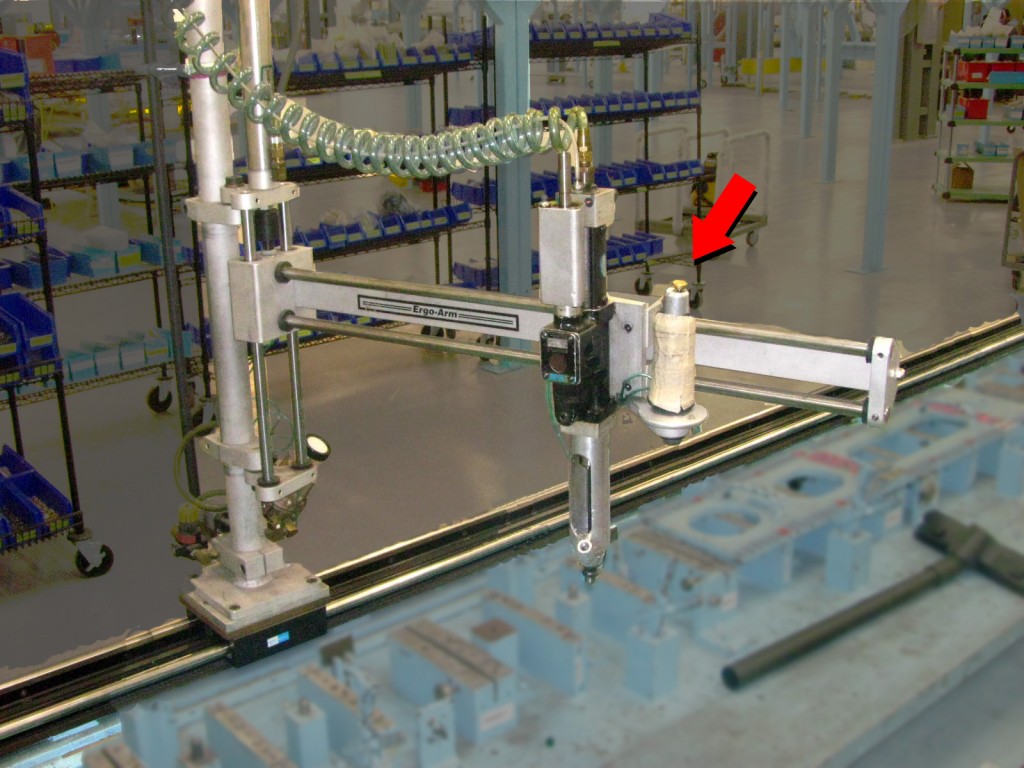 |
| Power assist (arrow shows activation button) |
Power assists can also be added to help push down and engage the tool. Also note in the photo above the track, which provides mobility for the arm and tool along the length of the fixture for the product.
Low tech spring tubing
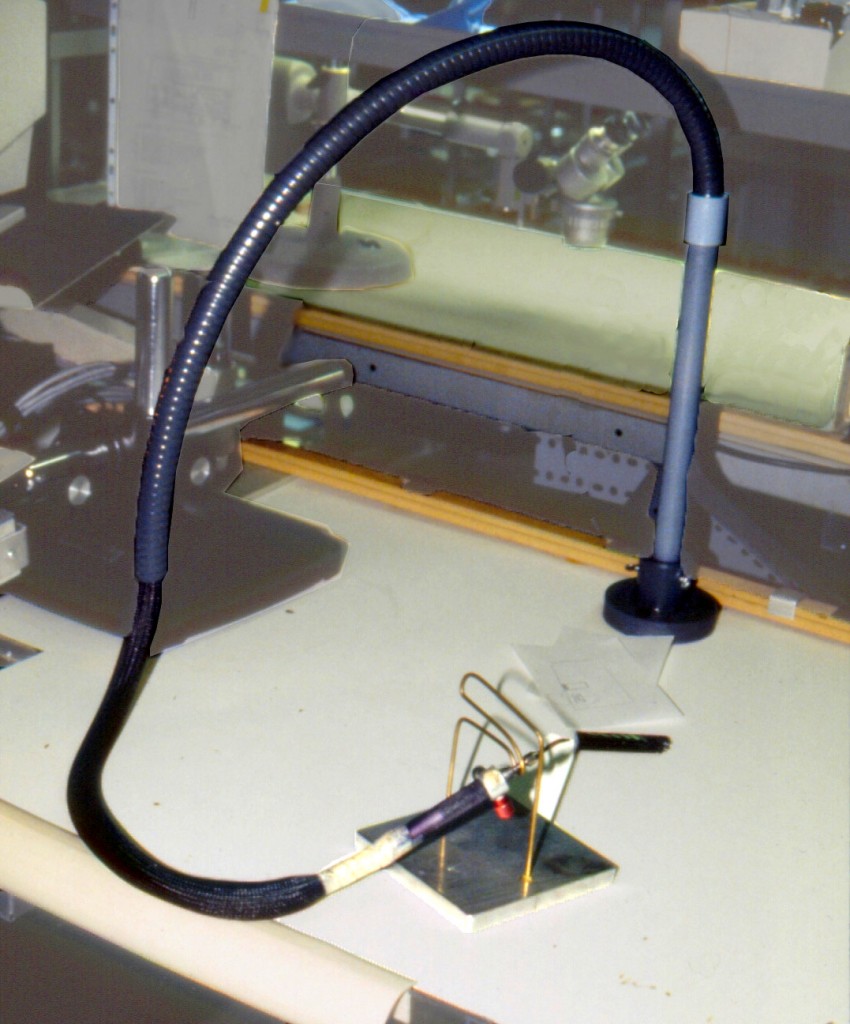 |
| Homemade from spring wrap tubing |
The example above shows a unique counterbalance that was homemade and virtually cost-free. Based on an employee suggestion, the relatively heavy cord for the tool was inserted through a short length of a spring wrap tubing, which was readily available in this work place. Secured as shown above, the spring tubing provided sufficient lift to serve as a conterbalance.
Mobile tool holder
| Tool holder |
Heavy tools can also be placed on carts or similar mobile holders. The version shown above for a hydraulic powered tool incorporates the following features:
- height adjustable to reach positions at varying levels
- small footprint to fit into congested areas
- hydraulic pump mounted on the portable holder
- all needed fittings and items also mounted on the device
- the tool is stored on the unit rather than in a case
Thus, the tool never needs to be lifted manually and is convenient to use.
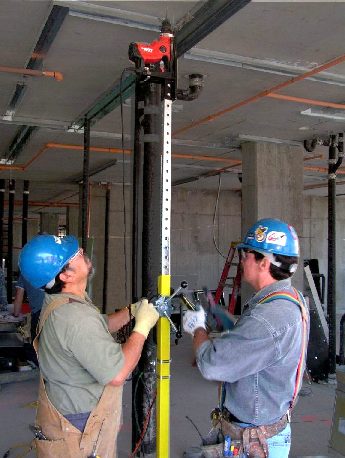 |
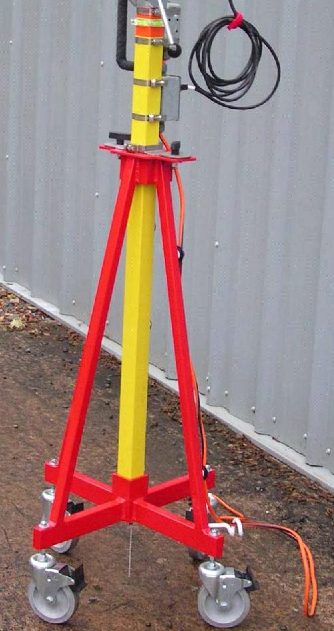 |
| Overhead work | Mobile base |
Mobile tool holders provide a good way to support tools overhead. The example above shows what is essentially an “inverted drill press.” The tool is secured to the top of the vertical shaft, which is raised up by means of a rotating handle and linear gear. The shaft is anchored to the mobile base.
(Source: “Interventions for Overhead Drilling in Construction,” Rempel, D., et al. Proceedings of the Human Factors and Ergonomics Society, 2008.)
Point-of-use storage
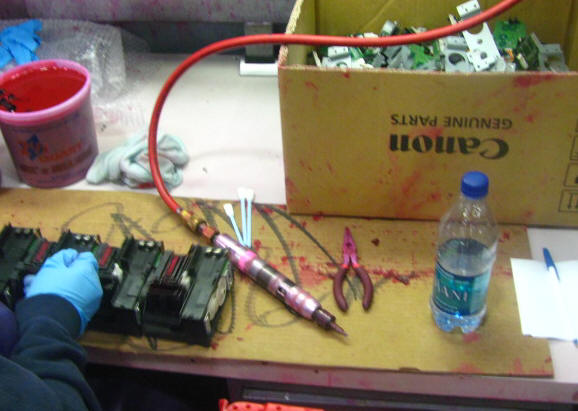 |
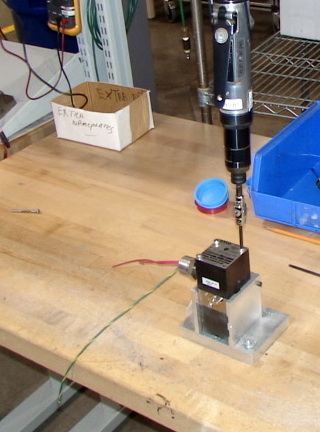 |
| No counterbalance, no logical place to put the tool | Tool balancers contribute to orderly workstations |
Without a counterbalance, there is often no convenient way to store tools near the point of use. Tools are usually placed on the workbench, which adds to congestion and can look messy. Videotape evaluation of workers shows that they often fumble to reach and pick up the tools, thus wasting time and increasing a hectic atmosphere to the job. With a well-placed counterbalance, the tool can be postioned ready to use and easy to reach. (See also Workstation storage)
Common pitfalls
Off center
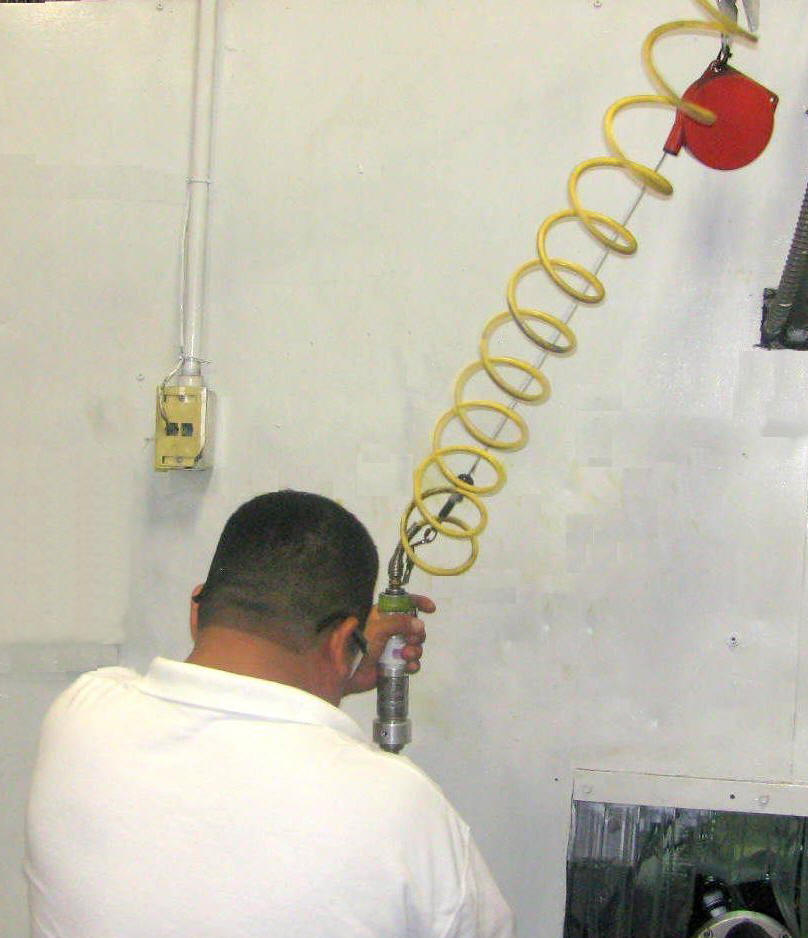 |
 |
| Examples of working off center | |
Normally, suspension reels should be located directly above the position where the tool is used. If not, then the tool needs to be pulled laterally, which can add strain to employee joints as well as pull the tool out of alignment. Sliding tracks and articulated arms help in this regard, but the starting point should generally be directly over the point of use.
Not adjusted properly
 |
| Tension too tight |
Tension control is a standard feature in tool balancers. However, worksite personnel are sometimes unaware of this adjustment and how it should be used. In the photo above, the tension was too tight and thus the tool positioned too high, thus requiring a longer reach and harder pull to use.
Proper use should be part of training programs and/or safety communications.
Drift away
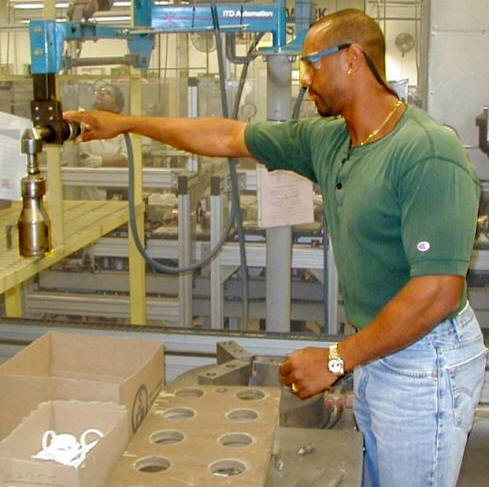 |
 |
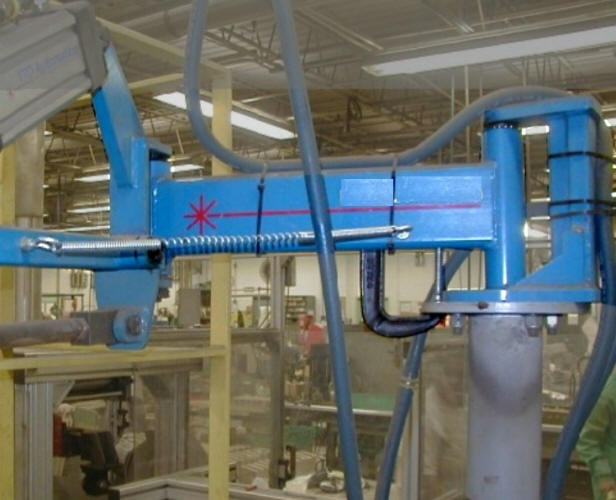 |
| Before: Reach | After: Close at hand | Solution: spring and C-clamp |
Sometimes, counterbalance arms can be slightly off center, causing the tools to drift away when not in use. In the example above, the assembler (an ErgoTeam member) added a C-clamp and a spring to keep it in place.
Vendors
Many vendors provide counterbalances. Several are listed below. Tool manufacturers may also have devices specifically designed for their products. Industrial suppliers provide a range of commonly used tool balancers and related equipment.
- www.nascoindust.com
- www.toolarms.com
- www.flexarminc.com
- www.mountztorque.com
- www.equipoisinc.com
- www.toolbalancerarms-3arm.com
